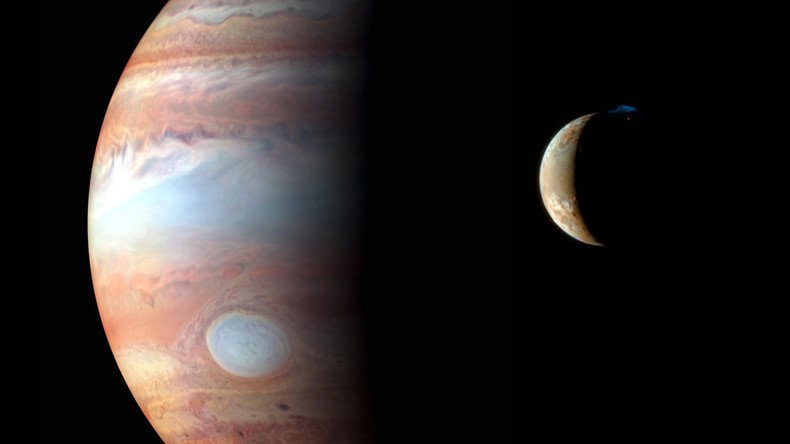Juno entering Jupiter's orbit: 5 things you need to know

NASA’s Juno spacecraft is scheduled to enter the orbit of our solar system’s largest planet Jupiter, completing a near five-year journey toward the unknown.
Here is everything you need to know about Juno’s trip so far, what’s going to happen on Monday night, and how this knowledge has the potential to change everything we understand about our cosmic neighborhood.
1) Jupiter is no joke
Jupiter is the biggest kid on our block, so huge that more than a thousand Earths can fit inside.
It’s 300 times the mass of our home planet and about two-thirds the size of all those circling the sun put together.
Jupiter’s high quantity of liquid metallic hydrogen means it is buried under the solar system’s largest magnetic field with pressure up to 2 million times that on Earth, more than even what the 'Space Oddity' was under.
The fifth rock from the sun is also the most severe radiation environment of any body in our system. The background radiation we’re exposed to on Earth is about 0.39 of a RAD, while Juno is expected to experience about 20 million RAD over the course of its mission.
2) Juno's mission
Its mission is to go where no spacecraft has gone before - and faster than ever.
It already broke the record as humanity's most distant solar-powered emissary - and will soon become the first to fly close to Jupiter and the first to orbit an outer planet from pole to pole.
Launched on August 5, 2011 on a mission that cost US$1.13 billion, Juno took the long way to get to the gassy giant, first orbiting around the sun, then passing the orbit of Mars before firing off a couple of main engine blasts back toward Earth to slingshot it on the 445 million mile course to Jupiter.
The Jupiter Orbit Insertion (JOI) burn begins at 8:18 p.m. California time, where engineers and scientists will keep track of the approximately 35 minute event at the Jet Propulsion Laboratory (JPL) in Pasadena.
When Juno has fulfilled its purpose, the spacecraft is scheduled to plunge itself into Jupiter’s atmosphere on February 2018.
3) Juno's Jupiter Insertion
The most dangerous part of the mission will be when Juno first enters Jupiter’s orbit.
The planet’s pressure is far too high to simply drop a probe on its surface, so NASA’s plan is to thread a fine line by getting as close as possible to the planet without getting sucked in by Jupiter’s magnetic field.
Juno will fly as close as 2,600 miles from Jupiter’s cloud tops, an area referred to as the “safe zone,” and then circle far away before coming back to loop around the planet again, a route that will take 14 days.
Juno will repeat that same loop every two weeks for about a year and a half until it has collected data from all over the entire planet.
Each time Juno flies close to Jupiter’s cloud tops, it will turn on its measuring instruments to collect a range of data about the planet, including the highest-resolution images ever taken of Jupiter.
4) What scientists hope to learn
Jupiter is the first planet formed, so any information learned from the Juno mission could shed light on the solar system's early history in a way they can’t learn it from other planets.
Scientists hope to gain an understanding of how our system was born by analyzing Jupiter’s interior - and they also want to know things like how magnetic fields are generated by getting the first unobstructed view into Jupiter’s core.
5) When and where can I watch it all happen?
RT will stream NASA's live feed starting at 10:30 p.m. Eastern Time. Enjoy the show.












